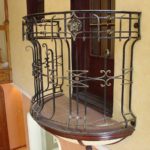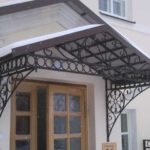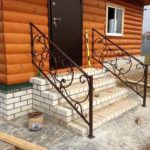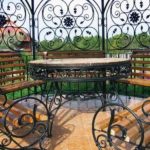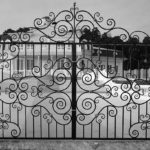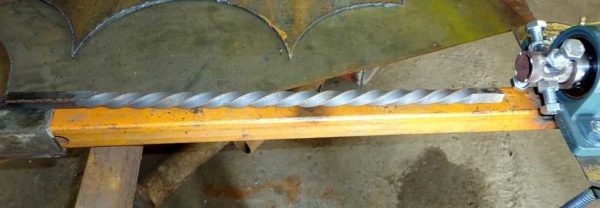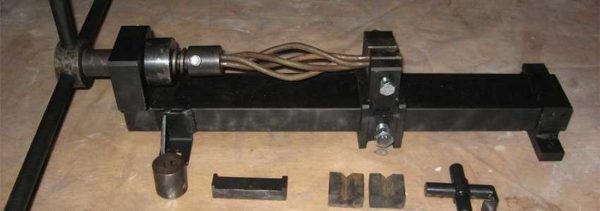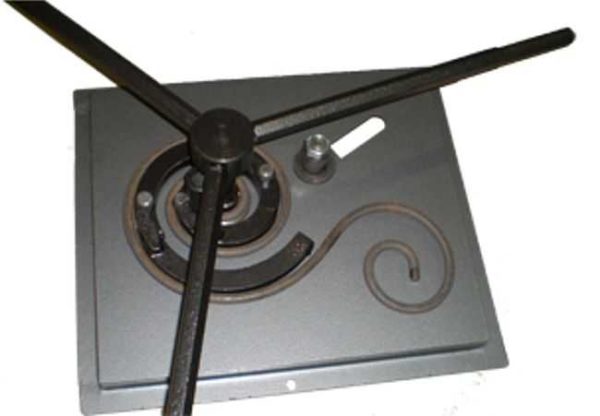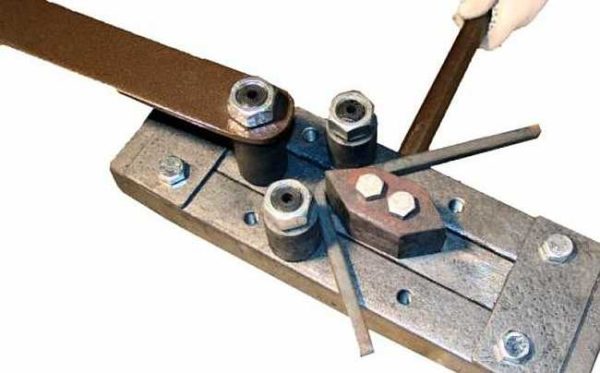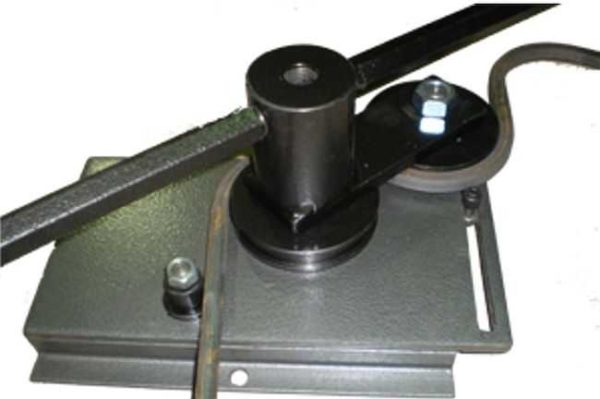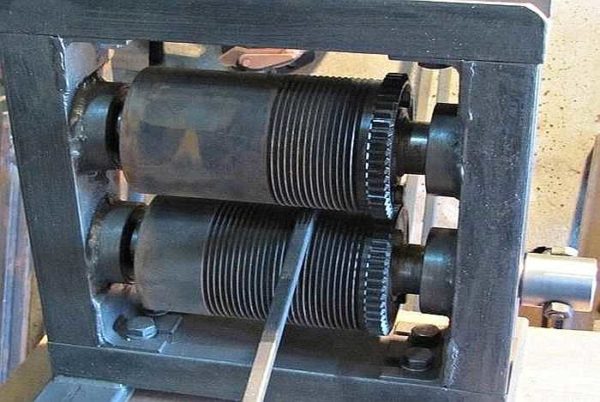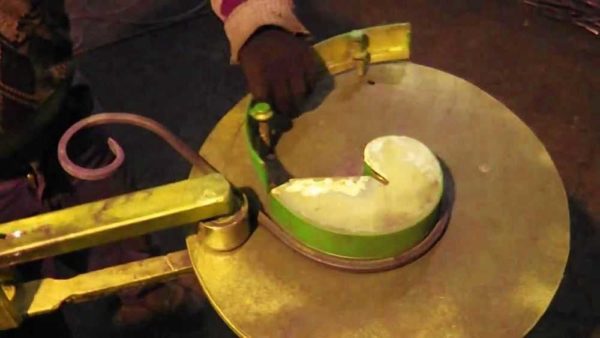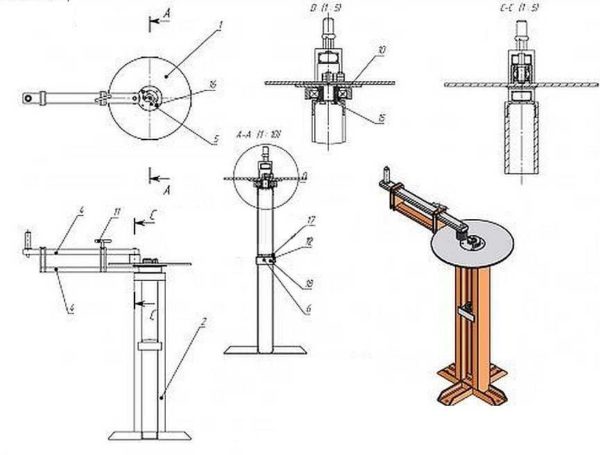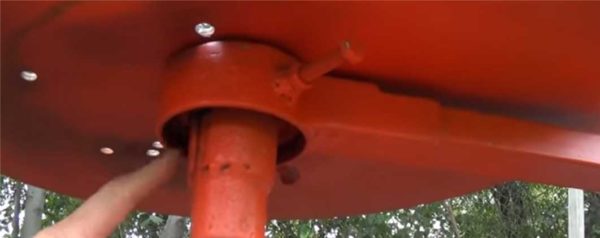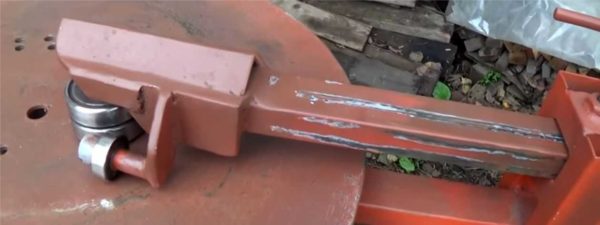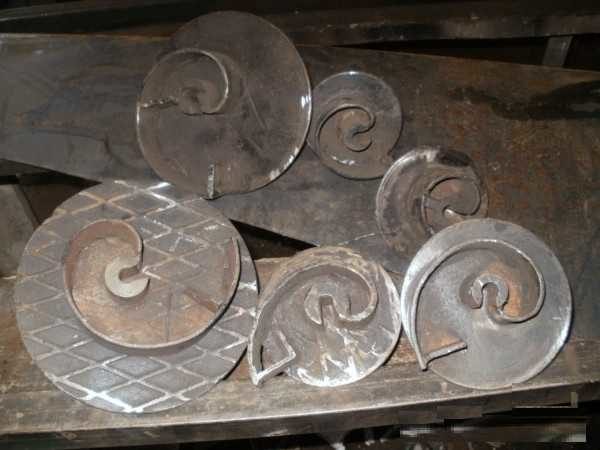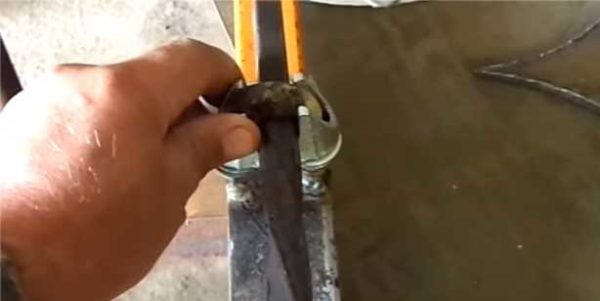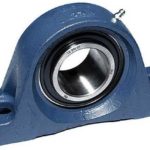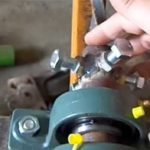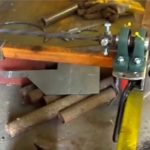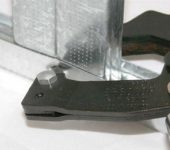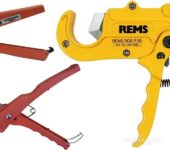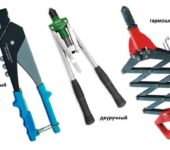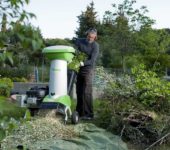Homemade fixtures and cold forging machines
One way to decorate plots is to use forged products. Fences, benches, gazebos, stair railings and other similar structures look very decorative. Moreover, in most cases, these products are not forging in its traditional sense. Most often, this is not done in a forge and not with a hammer and an anvil, but with the help of some devices that allow you to create a variety of patterns and products from metal strips and square bars. To make such products, you will need cold forging machines. Some of them can be made by hand, others are easier to buy.
- Fences, railings for stairs and balconies - you can also do it yourself
- Cold-forged porch canopy
- Porch railing is a decoration, not a purely utilitarian fixture
- You can make a gazebo and forged furniture
- The gate looks magical
The content of the article
What devices are used in general
Various curls, bends, twisted rods, etc. are typical for cold forging. Almost for each type, they are made on a separate device - a certain machine. They can be driven manually, or they can be electric. For small volumes "for themselves" use hand-held cold forging machines. Although they are not particularly productive, they are much easier to manufacture. If it is necessary to put the production "on stream" make similar devices, but with electric motors. In this case, it is almost not necessary to physically work, but the complexity of making the device increases significantly. In our article, let's talk about hand-held cold forging machines.
What devices are used:
- Torsion bar. With their help, tetrahedral rods or strips of metal are twisted in the longitudinal direction. It turns out twisted columns, which are also called torsion bars.
- Lantern. On this device, the bar is also twisted in the longitudinal direction, only it is additionally bent in the transverse direction. It turns out something like a flashlight. Hence the name of the device.
- Twisters or snails. Forms flat curls of different diameters.
- Bending machines or bending machines. Allows you to bend bars or fittings at the required angle anywhere.
- Wave. In fact, this is also a bunch, but of a more complex design - it allows you to change the direction of the bend, getting wavy details.
- Devices for processing the ends of parts - inertial stamping machines or other home-made devices.
For the novice craftsman, the most relevant cold forging machine is the snail. Only with its help you can make many interesting things - from a fence and a gate to a bench and other similar products. In second place in terms of need is a torsion machine. It adds variety to the details. All the rest can be acquired or made as you improve and gain skill.
Homemade "Snails"
In essence it is a modernized bending machine (pipe bender), but these improvements make it easy to make curls from fairly thick rods (up to 10-12 mm in cross section) and repeat them with a high degree of accuracy.
These machines for cold forging have several designs, but the easiest to implement is the option with a round table with a central leg. A lever with rollers on bearings at the end is movably fixed to the leg. They facilitate the bending process.
The table surface can be made of steel sheet with a thickness of 10 mm or more. Any thick-walled round pipe can be used for the leg. It is important to make the structure stable, since lateral forces will be applied, therefore side posts, spacers, as well as a stable base are needed.
The lever is easier to make from a square pipe with a thick wall - not less than 2-3 mm. The pipe section is 25 * 40 mm or so. Fastening the lever to the leg can be done on a bearing, or you can simply take a small piece of a thick-walled pipe of a larger diameter, put it on the leg, and weld a stop strip from below so that the lever does not fall down. The version with a bearing gives an easier movement, but if there is lubrication, the second option is working.
The shape of the lever is also important. The lever is double, the upper part is working, the lower part is supporting. Wherever there are connections, it is advisable to add gain, since the efforts are significant.
A mandrel or jig is fixed on the table - the shape along which the curls are bent. They are made of different diameters - so that you can make curls of different diameters. Such mandrels can be prefabricated - to form more bends. Each such sample should have rods that fit into holes in the table. So this pattern is fixed. Also, its shape should be designed so that the end of the bar is well fixed in it.
Often, mandrels are turned from a metal circle of a suitable diameter using a grinder, but there are options from metal with steel plates welded onto it, bent accordingly.
How to make a similar machine for cold forging - in the next video. There is also a good description of the way to bring the ends of the workpiece to a decent condition - ordinary raw edges look very rough. There is special equipment for their processing, but, as it turned out, you can cope without it.
Torsion machine
As already mentioned, these cold forging machines allow you to make longitudinal bends on the bar. This is a relatively simple construction. The main task is to fix one end of the bar motionless, attach a lever to the second, with which it will be possible to twist the workpiece.
As a basis, a cut of a profiled pipe with a thick wall (at least 3 mm) is suitable. The retainer can be welded from the same rods, leaving a square gap of the required diameter. You can use a wire clip of a suitable size (available at a rigging store). Any of these stops are welded to the base.
Next, it is necessary to somehow ensure the capture and twisting of the second part of the workpiece. This can be done using two bearing assemblies. A pipe of a suitable diameter is inserted inside, a handle is welded to it on one side - the design resembles the letter "T". On the other hand, a retainer is made in the pipe: four holes are drilled, nuts for 12 or 14 bolts are welded into them. The result is a good retainer - the bolts are tightened after the bar is inserted.
- Bearing unit
- Workpiece clamp
- This is how the whole structure looks like
Further - a matter of technology - with the lever we turn the required number of turns. This is not to say that this job is for weaklings, but with a lot of leverage, it's not all that difficult.
An even simpler machine for making torsion bars using the cold forging method is in the next video.
Video about homemade fixtures and cold forging machines

